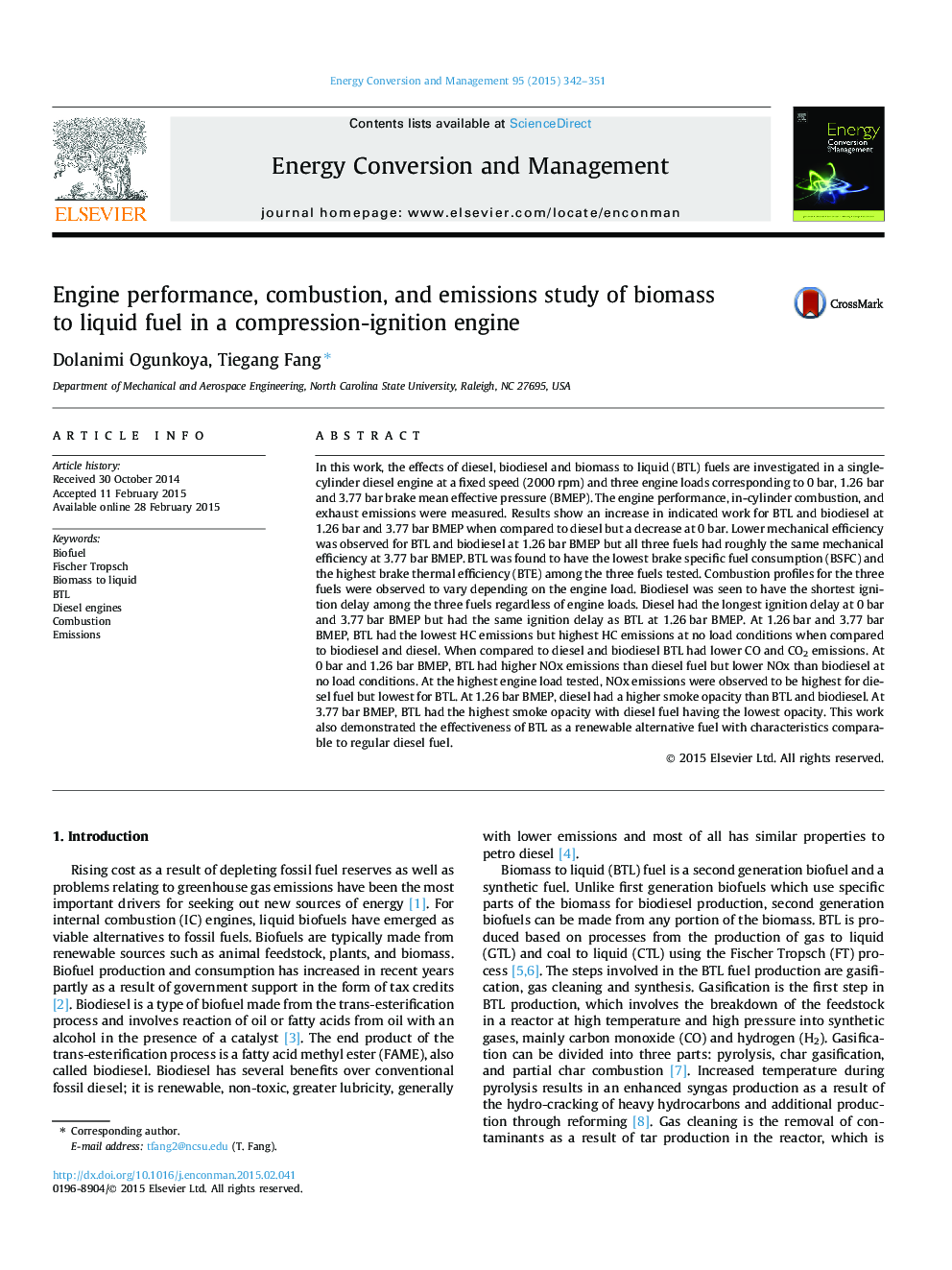| Article ID | Journal | Published Year | Pages | File Type |
|---|---|---|---|---|
| 765479 | Energy Conversion and Management | 2015 | 10 Pages |
•Renewable biomass to liquid (BTL) fuel was tested in a direct injection diesel engine.•Engine performance, in-cylinder pressure, and exhaust emissions were measured.•BTL fuel reduces pollutant emission for most conditions compared with diesel and biodiesel.•BTL fuel leads to high thermal efficiency and lower fuel consumption compared with diesel and biodiesel.
In this work, the effects of diesel, biodiesel and biomass to liquid (BTL) fuels are investigated in a single-cylinder diesel engine at a fixed speed (2000 rpm) and three engine loads corresponding to 0 bar, 1.26 bar and 3.77 bar brake mean effective pressure (BMEP). The engine performance, in-cylinder combustion, and exhaust emissions were measured. Results show an increase in indicated work for BTL and biodiesel at 1.26 bar and 3.77 bar BMEP when compared to diesel but a decrease at 0 bar. Lower mechanical efficiency was observed for BTL and biodiesel at 1.26 bar BMEP but all three fuels had roughly the same mechanical efficiency at 3.77 bar BMEP. BTL was found to have the lowest brake specific fuel consumption (BSFC) and the highest brake thermal efficiency (BTE) among the three fuels tested. Combustion profiles for the three fuels were observed to vary depending on the engine load. Biodiesel was seen to have the shortest ignition delay among the three fuels regardless of engine loads. Diesel had the longest ignition delay at 0 bar and 3.77 bar BMEP but had the same ignition delay as BTL at 1.26 bar BMEP. At 1.26 bar and 3.77 bar BMEP, BTL had the lowest HC emissions but highest HC emissions at no load conditions when compared to biodiesel and diesel. When compared to diesel and biodiesel BTL had lower CO and CO2 emissions. At 0 bar and 1.26 bar BMEP, BTL had higher NOx emissions than diesel fuel but lower NOx than biodiesel at no load conditions. At the highest engine load tested, NOx emissions were observed to be highest for diesel fuel but lowest for BTL. At 1.26 bar BMEP, diesel had a higher smoke opacity than BTL and biodiesel. At 3.77 bar BMEP, BTL had the highest smoke opacity with diesel fuel having the lowest opacity. This work also demonstrated the effectiveness of BTL as a renewable alternative fuel with characteristics comparable to regular diesel fuel.
